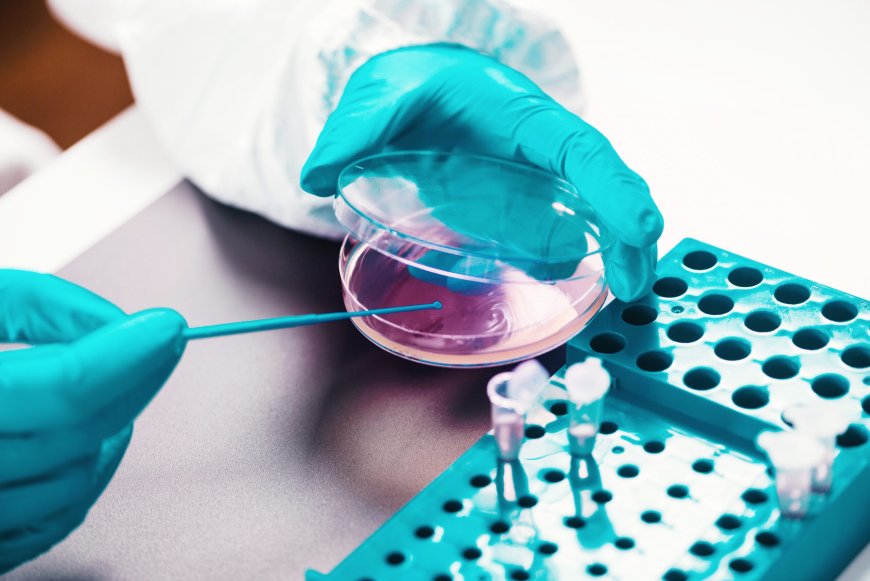Clinical Microbiology: Understanding the World of Microorganisms
Clinical microbiology emerged as a medical specialty in the late 19th century with the discovery of microorganisms and their role in causing infectious diseases.

History and Scope
Clinical microbiology emerged as a medical specialty in the late 19th century with the discovery of microorganisms and their role in causing infectious diseases. Pioneers like Louis Pasteur and Robert Koch developed new techniques to culture and identify various pathogens responsible for illnesses. Their work established the germ theory of disease and laid the foundation for the field of microbiology. Clinical microbiology applies microbiological techniques to diagnose, treat and control infections in patients. It plays a vital role in modern healthcare by aiding physicians in selecting appropriate antimicrobial therapies.
The scope of Clinical Microbiology has expanded significantly over the past decades. Traditional areas include bacteriology, virology, mycology and parasitology. Advanced methods like molecular diagnostics and DNA sequencing have augmented laboratory investigations. Clinical microbiologists work closely with other specialists to combat outbreaks of new and re-emerging diseases. They assist in infection prevention, antimicrobial stewardship and epidemiological surveillance. Understanding the host-pathogen dynamics is crucial for developing new antimicrobials and vaccines. Overall, clinical microbiology aims to curb the global burden of infectious illnesses through rapid detection and characterization of microbial agents.
Culture-based Diagnostics
Culture remains the gold standard technique for isolating and growing microbes from clinical samples. Specimens from sites of suspected infection like blood, urine, wounds, respiratory or gastrointestinal tract are inoculated onto suitable culture media under sterile conditions. Bacterial colonies appearing on agar plates after overnight incubation are subjected to biochemical tests and examination under the microscope. This allows definite identification of common pathogens like Staphylococcus, Streptococcus, Escherichia coli and Pseudomonas. Culture also determines antimicrobial susceptibility patterns which guide therapy.
A major limitation is the slow turnaround time of 1-3 days for most organisms to grow. Fastidious or slow-growing bacteria and viruses cannot be cultured. Recent advances include automated continuous monitoring systems and platforms that accelerate growth. Molecular assays are often performed in parallel to provide early diagnosis. Despite these issues, culture remains pivotal for public health monitoring of antibiotic resistance trends over time. Isolates are stored for future reference, quality assurance testing and outbreak investigation.
Molecular Diagnostics
Polymerase chain reaction (PCR) has revolutionized the field of clinical microbiology. It enables rapid amplification and detection of specific microbial nucleic acid sequences from clinical specimens within hours. Real-time quantitative PCR assays for respiratory viruses like influenza have significantly shortened the time taken to start appropriate antiviral therapy. Multiplex PCR panels can identify dozens of bacteria and viruses in a single test. This has particular utility in immunocompromised patients with respiratory infections and young infants with bacterial meningitis.
Advanced molecular tools such as DNA microarrays and next-generation sequencing enable comprehensive profiling of infection without relying on prior assumptions. These unbiased methods discovered new human pathogens and characterized disease outbreaks before the causative agents could be cultured. Whole genome sequencing of clinical isolates provides valuable epidemiological data to monitor antimicrobial resistance transmission within hospitals and communities over time. It is one of the most promising approaches for infection control. The declining costs of these technologies will make whole genome-based diagnostics more accessible in the years to come.
Mycology
Fungal infections impose a considerable disease burden globally. Clinical mycology aids diagnosis of conditions ranging from superficial dermatophyte infections to life-threatening systemic mycoses. Examination of specimens by microscopic examination of specimen stains like potassium hydroxide preparation can detect fungal elements rapidly. Culture remains the reference standard but requires 1-4 weeks owing to slow fungal growth. Identification is based on assessment of colony morphology and microscopy of fungal structures.
In recent years, non-culture diagnostics have gained prominence for early diagnosis of invasive fungal diseases. Detection of fungal antigens in body fluids and nucleic acid amplification tests provide results within hours. Serum galactomannan testing revolutionized management of invasive aspergillosis. Beta-D-glucan assays aid diagnosis of diverse fungal infections but lack specificity. Molecular identification tools are enhancing epidemiological surveillance of emerging resistant fungi. Antifungal susceptibilities are pursued for certain patient groups to optimize therapy. Overall advances in mycology aim to lower the mortality linked to these opportunistic infections.
Clinical microbiology plays a vital role in public health by providing valuable support to clinicians managing infectious diseases. Culture remains the traditional mainstay for common bacterial pathogens despite its time limitations. Emerging molecular technologies facilitate rapid testing for a vast array of microbial agents from clinical specimens. These are revolutionizing the speed, scope and sensitivity of diagnosis. Whole genome sequencing holds promise as a comprehensive diagnostic and epidemiological tool of the future. Overcoming current hurdles would make it accessible globally. Continuous advancement of techniques will help combat the evolving threat of antimicrobial resistance and emerging infectious diseases through accurate detection of hidden microbial threats.
Get more insights on Clinical Microbiology
Unlock More Insights—Explore the Report in the Language You Prefer
About Author:
Money Singh is a seasoned content writer with over four years of experience in the market research sector. Her expertise spans various industries, including food and beverages, biotechnology, chemical and materials, defense and aerospace, consumer goods, etc. (https://www.linkedin.com/in/money-singh-590844163)












